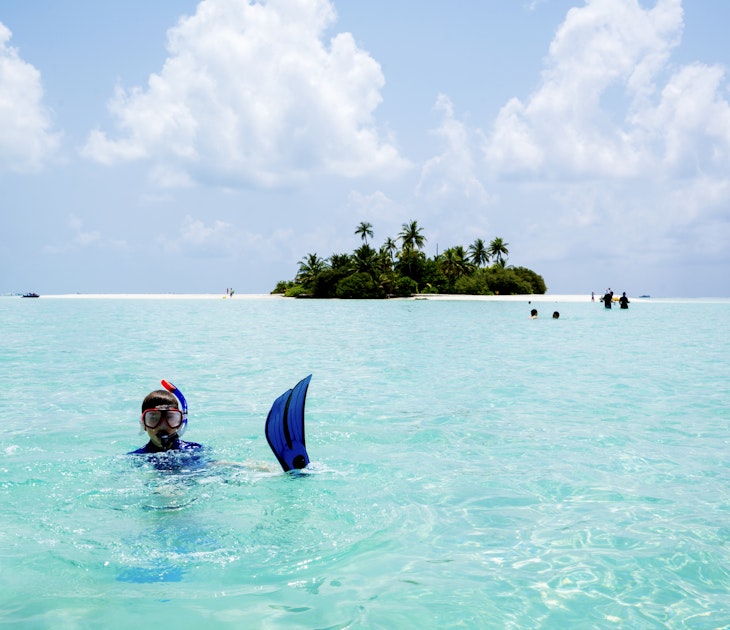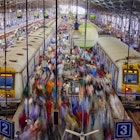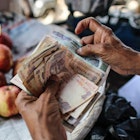At rush hour in Mumbai, the ladies’ car of the city’s Western Line train is stuffed with working ladies in smart salwar kameez sets, tribal women with tattoos on their wrists and gold jewellery in their ears, and ambitious university students with flowing hair, tight jeans and backpacks full of engineering homework. Breezes blow the smell of sweat and jasmine through the air, along with the sweet, mournful voice of a man in the next car singing to God. The crowd at each station platform looks gigantic, and the passengers trying to get off are as determined as the women pushing their way on. It looks as though some will not make it — the train stops only for a few seconds — but somehow, magically, everyone does.
The Mumbai Suburban Railway transports seven million people every day. The Western Line, along which most of the city’s suburban sights, stores and bars are located, runs every two minutes with what you would call Swiss precision if it was not so Indian – as chaotic and crowded as it is serene and efficient. Mumbai is huge, and the train is what makes this city run, allowing rich and poor alike, from anywhere along its 465km of rails, to get to work and home again.
For travellers staying in the city centre, the train makes it possible to explore the old guard of sights and the suburbs, where many of the coolest lounges, restaurants and shops have opened up in recent years. Wake up early and do a three-faith pilgrimage, stopping at the Global Pagoda off the Borivali station, and Haji Ali Mosque and Mahalaxmi Temple in Mahalaxmi. Shopping trips can take in Anokhi in Bandra for woodblock-printed clothes, Shrujan in Vile Parle for hand embroidery from Gujarat, Lower Parel’s over-the-top luxury High Street Phoenix mall or Chor Bazaar on Grant Road for antiques and old film posters. Both Girgaum Chowpatty on Charni Road and Juhu beach in Vile Parle make fun beach breaks with excellent snacking. Sinner at Culture Curry in Matunga or drinks and live music at Bluefrog in Lower Parel make for perfect suburban evenings.
But often it is the encounters on the train that are the highlights of a trip. The festival, temple or slum that you see out of the window, or the oddly great taste of the namkeen (fried snack) bought from a wandering train vendor, is what stays with you. Sifting through boxes of bindis or hairclips with other women in your carriage is surprisingly comfortable, even homey. The train is one of the few places where you can participate in a truly local ritual, and distinctions between Indian and foreigner fade. Everyone here is just a passenger.
The same goes for the train stations, worlds unto themselves that are worth exploring before jumping on the train or heading out to the road. Here, weight machines light up like arcade games and, for a rupee, give you a 'health card' printed with your weight and a fortune. ('You have a rare, unapproachable delicacy, poise and a charming manner.') Flower garlands and knockoff Chetan Bhagat novels are for sale, as are snacks like chikki, a kind of peanut (or sesame or amaranth) brittle, and vada pao — a fried mash of potatoes, veggies and spices, served on a tiny bun with chutneys and chilli. The ubiquitous 'Rail Aahar' (literally, Rail Diet) stalls also make masala soda, which is club soda with lemon juice and jal-jeera powder (a mix of spices that includes cumin, mint, black pepper and ginger, among many other things). It is often served in a stainless-steel cup and, along with some people-watching, makes a perfect post-train-ride break on a hot day. Order one, find a seat somewhere, and — like many millions have before you — find yourself slowly becoming part of the city.
The Mumbai Suburban Railway is easier than it looks, especially with a few tips:
- Rush hour on the train is an experience, but maybe more of an experience than you need. To beat it, do not ride southbound trains between 7 am and 11 am, or northbound from 4 pm to 8 pm.
- During rush hours, start edging your way toward the exit at least two stations ahead of yours. One station ahead, get as close to the door as you can; ask someone which side your platform will be on. At your stop, push forward and let yourself be pushed from behind.
- In women’s cars, if you are stuck standing, you can arrange to take the seat of a fellow passenger. Ask where they’re getting off (If English is not working, try Hindi: Ap kahan ja rahe hain?), and if it is somewhere close, just gesture that you will take her seat and you have a deal.
- Only cross the tracks at official crossings or flyovers, do not hang out the door or jump on or off the trains as it is moving, and do not sit on the roof (however tempting!). About 10 people die every day on the rail network. Mumbai trains are no joke.
- Do not board 'fast' trains (marked with an 'F') unless you know what you are doing. They run express and may skip your stop.
- Western Railway sells 'tourist tickets', which give you unlimited rides for one, three or five days — much easier than navigating the complex ticket system. Otherwise, second-class fares are quite cheap — a few rupees in most cases — but you will need to queue up to get them.
Get inspired by our 30th anniversary edition of the India guidebook!












